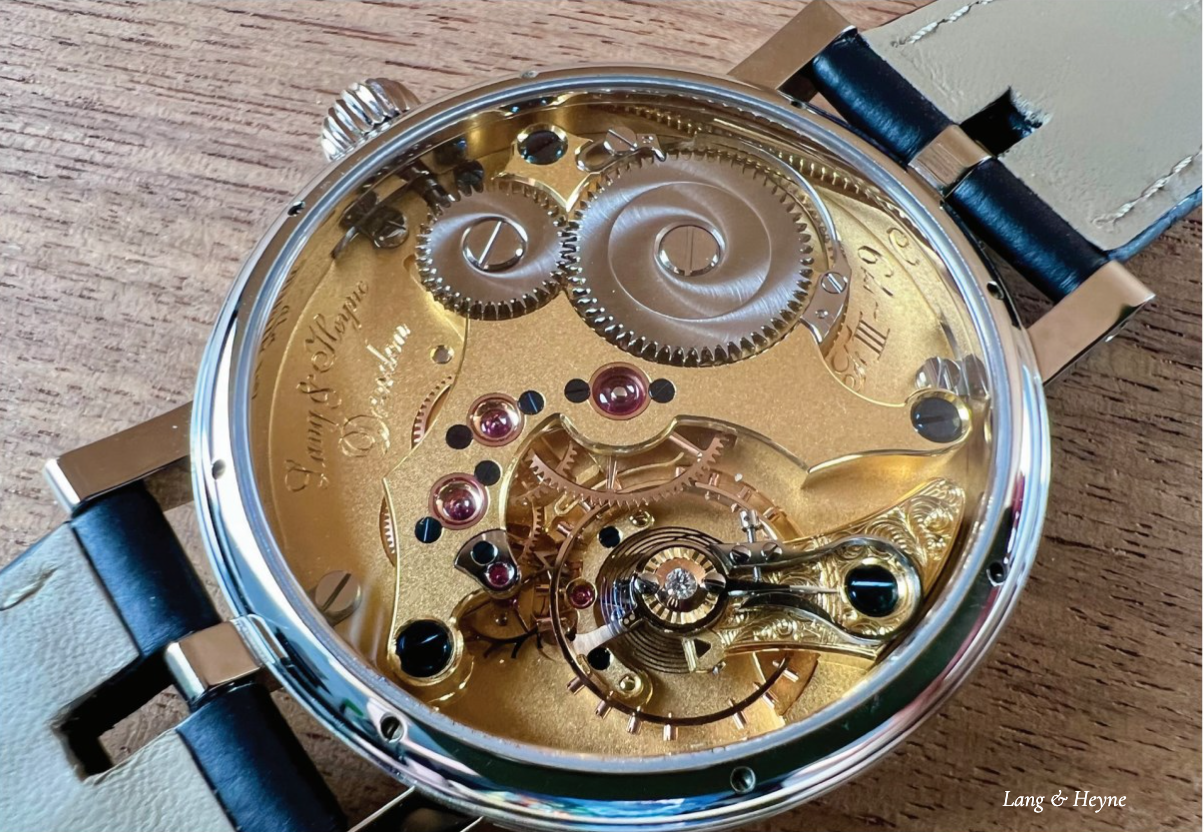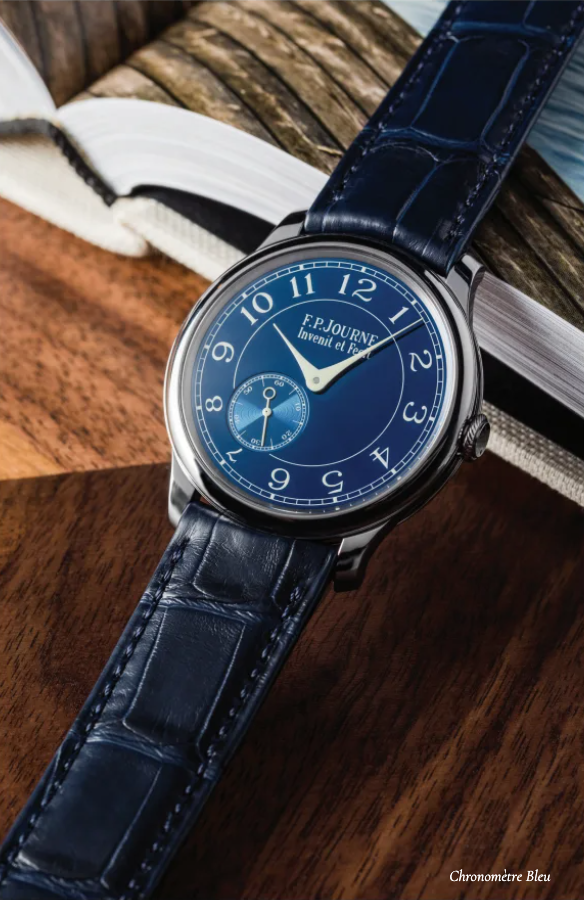Return of the DRESS WATCH
Live Beautifully
dress watches - the original wristwatches - are having a moment.

Dress watches are a bit like premium bourbon and the blues. All three have been around for eons, but periodic comebacks lead to talk about “revival” whenever dying embers catch a fresh draft. Following years on the back bench of men’s fashion, traditionally elegant timepieces from luxury brands are surging in popularity.
Before any talk of a dress watch renaissance, it’s important to emphasize how the most traditional style of men’s watch found itself in such a hole. That story begins in the mid-1970s, a time when cheap quartz watches primarily of East Asian manufacture decimated demand for cheap mechanical watches. Up to that point, most mechanical watches – the kind driven by springs – were utilitarian and often disposable. Modern collectors often forget that prior to quartz, the mechanical watch was a necessity, not a luxury, and low-dollar options were churned out for the masses. That market – not luxury – was the sector decimated by what historians have dubbed Switzerland’s “Quartz Crisis.”
The aftermath of the Quartz Crisis witnessed the resurrection of the mechanical watch as a luxury item. In the same sense that the equine industry shifted from nags hauling carts to carefully bred animals for elite outlets, the mechanical watch went from a ubiquitous appliance to something sought as a beautiful anachronism. No brand mastered that transition better than Rolex. Always considered the upper echelon of volume-built watches, Rolex recognized sooner than most that mechanical watches were transitioning from practical to emotional purchases. It surged seamlessly from marketing its task-oriented watches on a practical basis to selling the romance of climbing, flying, driving, and diving. And, particularly in the U.S., buyers responded. The 1980s and 90s witnessed the rugged Rolex Submariner and its ilk become the default watch of the business elite and high society. Other brands took the cue from leader Rolex and followed with their own sports models for aspirational buyers.
Early 21st-century tastes accelerated the move towards aggressive styles; the “big watch” trend of the 2000s was incompatible with discrete dress watches. Audemars Piguet’s hulking Royal Oak Offshore became the mark for every collector and copycat watchmaker looking to make a statement. By the time that affectation ran its course, the 2010s obsession with steel hyper-luxury watches hit its stride. Patek Philippe’s Nautilus and Audemars Piguet’s venerable (non-Offshore) Royal Oak surfed on the waves of newfound social media technology to become fetish objects; this style was massively copied by every brand from patrician A. Lange & Söhne to humble Tissot.
The tide started to turn in the early 2020s. Tastes are fickle, but they’re also cyclical. As with anything relating to a product that melds man and machine, the resurgence of dress watches turned on changes in the watches and changes in buyers themselves. During this decade, two major trends ushered renewed interest in dress watches.
First, the collector changed. In the 1980s, people saw popular watches in offices, clubs, magazines, and literally no one had an internet link. Due to the slow Swiss embrace of the Internet, this remained the case through the 1990s. You bought what you saw in daily life, and that was generally something by Rolex or influenced by Rolex. By the 2020s, nobody with even a casual interest in watches felt confined by daily routines. The advent of social media, dedicated community websites, official manufacturer pages, and the infinite reach of Google made even the most esoteric watches accessible to a newcomer. New collectors began entering the hobby with an immediate interest in Patek Philippe, Vacheron Constantin, and Credor dress watches despite little to no firsthand experience. Horizons broadened beyond the office and the local cafe.
Second, the nature of dress watches began to change. What began as a category of frumpy totems for retirees and stuffed suits evolved into a broader range of all-arounders. A black tie might have seemed mandatory to wear a yellow gold Patek Philippe 3919 in 1989, but Audemars Piguet’s white gold 2019 Code 11.59 wore like luxury denim – ready for anything. Patek Philippe went even more aggressive with its 5270P. Stacked with white platinum, a salmon dial, and a substantial 41mm footprint, this perpetual calendar chronograph is more than an effete add-on for a night at the opera.
Independent luxury watch brands have propelled the rehabilitation of the dress watch. Small creators including Laurent Ferrier, Akrivia, Grönefeld, Lang & Heyne, and F.P. Journe rose primarily or exclusively on the strength of their dress watch models. Many of these only added sports watches after they made good with elegant options. Among watchmaking startups, F.P. Journe has been the most influential. Although neither first among the indies nor prolific in output, Journe demonstrated most clearly that strong brand identity and creative vision are the keys to success in this space. Not only did François-Paul Journe wait 12 years to market his first sports watch, but his most basic dress watch – the Chronomètre Bleu– became the single most requested reference in the elite independent brand landscape.
The CB, as it’s affectionately known, isn’t large, luminescent, or highly water resistant – the things a sports watch should be. Journe’s 39mm tantalum machine is nearly the size that many brands were marketing to women during the over-caffeinated 2000s. And it’s the watch every watchmaker wishes he had invented first.
This evolution isn’t limited to elite-class timepieces. Brands such as Scotland’s anOrdain, China’s Atelier Wen, and Hong Kong’s Zentier offer compelling and contemporary dress watches for thousands or even hundreds of U.S. dollars. The Zentier Z6 Sauté, a mechanical jump-hour watch with a malachite stone dial, costs only $949.
Certain examples of the modern dress watch genre are so avant-garde that they would have been unrecognizable to designers and collectors of the 1990s. The liberating example of Switzerland’s De Bethune and its award-winning DB28XP demonstrates how far the fabric of a modern dress watch can be stretched. With a titanium case, a dial-size movement, and hinged lugs that meld to the wrist, the DB28XP appears to owe more to Star Trek than Switzerland. And yet, this isn’t a watch for racing cars, wreck diving, cave spelunking, or combat swimmers; it’s a romantic time-only with an ultra-thin profile.
It’s the dress watch transcendent – and triumphant.
Tim Masso of The 1916 Company is a watch enthusiast, designer, collector, and internet and YouTube sensation. He is thought to be one of the world’s authorities on timepieces and has written for global publications including Wellington Quarterly. A former Naval Officer, we thank Tim for his service.





